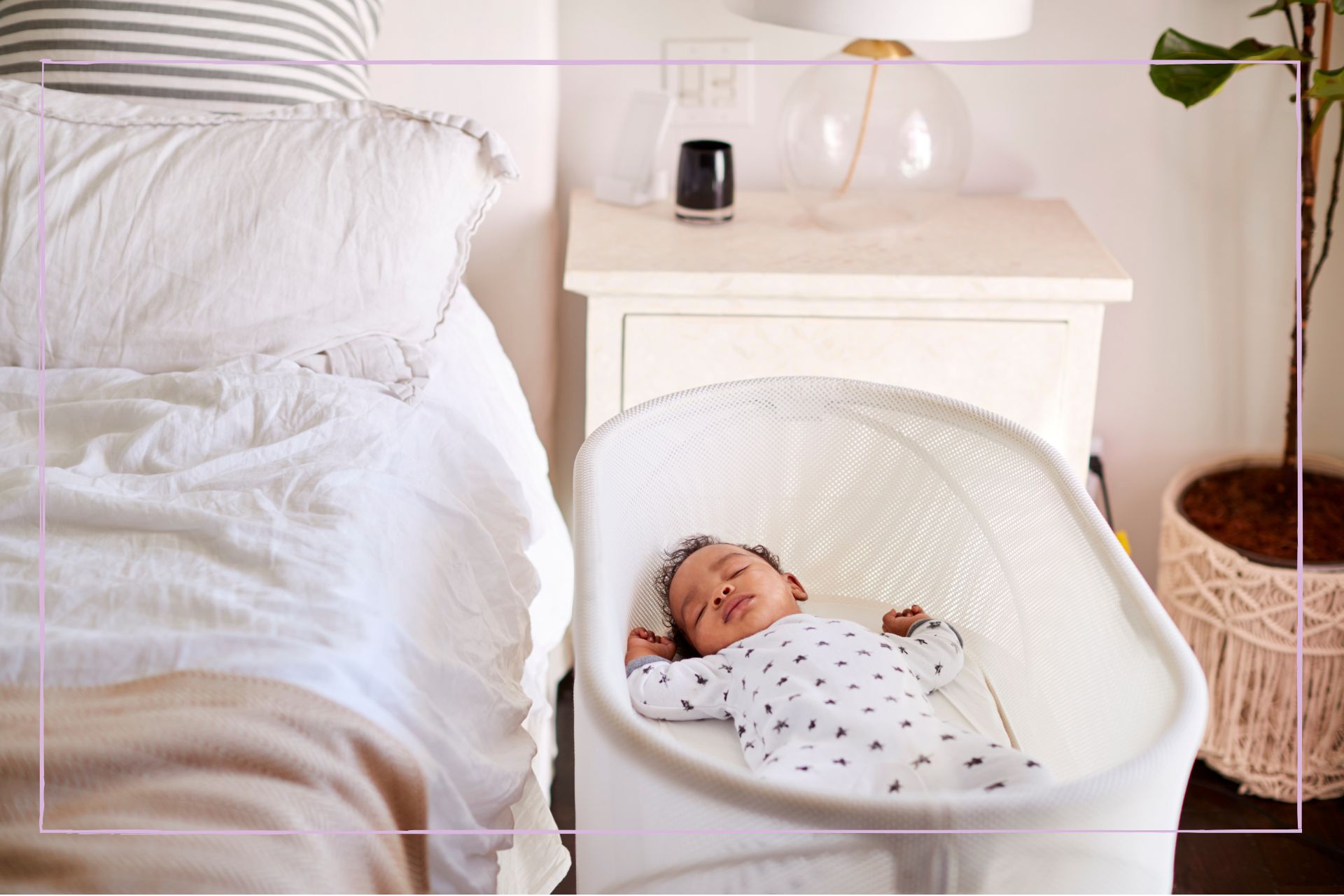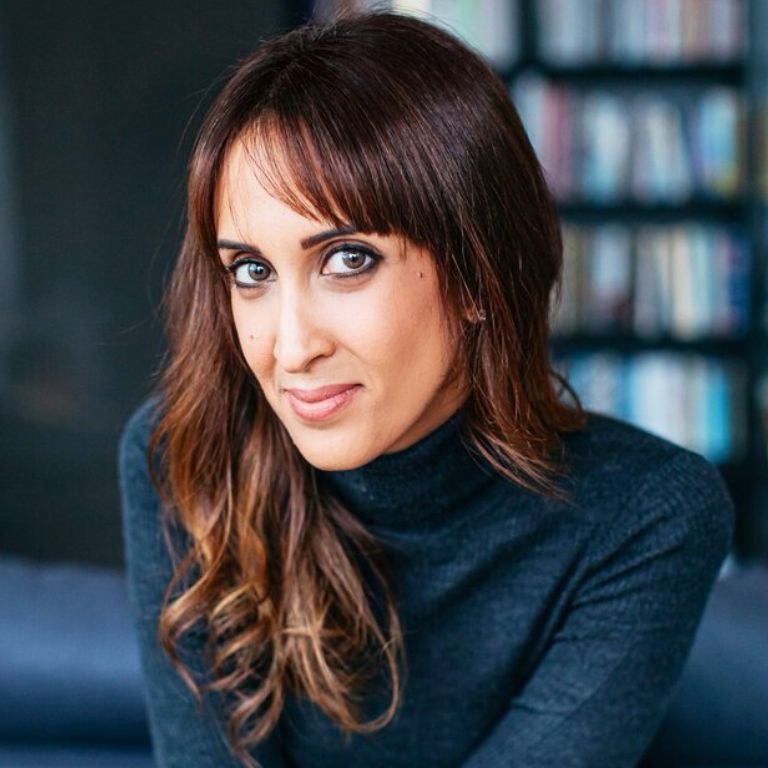Risk for SIDS by age - Three experts share the highest risk factors to look out for
Risk for SIDS by age is useful knowledge to have, we share insight below

Trigger warning: Sudden Infant Death Syndrome is a hard subject to read about, but here at Goodto.com we are dedicated to arming you with factually correct information, so you can make informed decisions that are right for you and your family.
Risk for SIDS by age is something most parents want to know about. Sudden Infant Death Syndrome (SIDS), sometimes known as ‘cot death’, is a rare but deeply distressing event that impacts families around the world.
SIDS refers to the sudden and unexplained passing of an otherwise healthy baby who is under the age of one. Naturally, all parents are eager to know if SIDS can be prevented. Although there’s no way to completely prevent SIDS, there are lots of steps that you can take to reduce the risk - such as ensuring your baby sleeps on a firm and free-of-clutter cot mattress, and maintaining a consistent temperature with a safe baby sleeping bag. "The risk of SIDS is mainly in the first few months of life, and about 90% of the deaths occur before the baby is six months old," explains Dr. Anna Pease. "But, there is still a risk after that which is why the safer sleep advice applies to all babies under one year old."
In this article, we'll look at which babies are most at risk of SIDS, and how the risk changes with age. We’ll also share practical, evidence-based steps you can take to create a safer sleep environment for your baby and lower their risk of SIDS.
Risk for SIDS by age - when is the risk highest in the first year?
Between the ages of 1 and 3 months old is the highest risk, according to The Lullaby Trust. While 90% of all SIDS deaths happen before a baby is 6 months old, as shown with his study by the National Institute of Health there is still some risk after this, but it's much lower.
| 1-4 months old: | SIDS risk is highest in this age group with over 70% of deaths occuring in babies before the age of 4 months | Row 0 - Cell 2 |
| 1-6 months old | 90% of all SIDS deaths occur in the first six months | Row 1 - Cell 2 |
| 8-12 months | Risk reduces but safe sleep practices are still important | Row 2 - Cell 2 |
Despite the risk of SIDS remaining low, it continues to frighten parents due to its unpredictable nature and the lack of a clear understanding of its causes. It can occur without any warning signs or symptoms, adding to the fear experienced by parents. The fact that SIDS can happen during sleep, a time when parents may feel less vigilant, further contributes to their concerns. If you find yourself worrying constantly about SIDS, try to remember that you're not alone. However, following baby sleep guidance will mean the risk of it happening to your baby is low.
Parents of babies who are considered vulnerable, such as premature babies, can be particularly affected by the fear of SIDS.
Gemma Flinders, a mother of a premature baby, shared her experience with us. "My son was born 6 weeks premature and spent the first week of his life in NICU. I was fortunate enough to stay with him in the hospital during this time and felt reassured by being surrounded by medical staff. The true anxiety didn't hit until he came home. SIDS, often having an unexplained cause, is something that as a parent you cannot stop and can only take steps to prevent as best as possible."
Parenting advice, hot topics, best buys and family finance tips delivered straight to your inbox.
Gemma explained the measures she took to reduce her son's risk,
- Ensuring his feet touched the bottom of his cot
- Maintaining a comfortable room temperature of 16°C-20°C
- Using appropriate bedding
- Using a sensor pad to detect his breathing
- Giving him a dummy, as some studies, like this one from the National Library of Medicine have found that this may reduce the risk of SIDS.
As her son grew older, Gemma noticed that her worry about SIDS gradually decreased. She said, "The level of anxiety experienced does level out. Of course, I still check on him before I go to bed, but at 6 years old now, I am more used to the anxiety of having a child, and he can tell me when he doesn't feel well. So it no longer feels as overwhelming."
What are the causes of SIDS?
Dr Nauf AlBendar, Medical Scientist & founder of The Womb Effect tells us, "Although the cause is still unknown, evidence suggests that a combination of physical and environmental factors can make an infant more vulnerable to SIDS."
Physical or biological factors include:
- being premature
- being a baby boy
- having a low birth weight
A 2022 study by the University of Syndey has shed light on a potential biomarker for SIDS that could help in its early detection. Researchers have found that low levels of a specific enzyme called butyrylcholinesterase (BChE) may be linked to SIDS. BChE plays a role in breaking down acetylcholine, a neurotransmitter that is important for breathing and awakening. This means that babies who have lower levels of this enzyme might be at a higher risk for SIDS, although we need more research to fully understand this connection.
There are also certain environmental factors, as confirmed by a study from BMC Paediatrics, that can increase the risk of SIDS. These include:
- Unsafe sleeping position: Don't put your baby to sleep on their stomach or side. The safest sleeping position for infants is on their back, with their feet at the foot of their cot. This stops them from wriggling down into their bedding.
- Maternal smoking: Don't expose your baby to cigarette smoke during pregnancy or after birth.
- Dangerous co-sleeping: Don't sleep on a sofa with your baby or share a bed with them if you have been smoking or drinking.
- Overheating: Maintain a comfortable and safe temperature in the sleep environment (16 - 20C) and dress your baby appropriately for sleep.
- Soft bedding: Keep your baby's cot free of soft bedding materials such as pillows, blankets, cot bumpers, or stuffed toys
Dr. Anna Pease, who has conducted multiple studies into SIDS and its risk factors, says it’s crucial for parents to be aware of the risks and take preventative measures to create a safe sleep environment.
Speaking to Goodto.com she tells us; “Parents and carers need to understand why safer sleep is important and how to manage to do it, especially when they are very tired or when there's been a change of some kind. Safe sleep isn't something to do just most of the time. On those nights when things are different, on holiday or after a party, for example, those are the nights to keep safety at the top of the list. Parents also need to know how to identify symptoms of illness and know what to do and who to contact if they are worried.”
Dr Nilong Vyas, Pediatrician at Sleepless in NOLA and Medical Review Expert at SleepFoundation.org, agrees. "Babies that are at the highest risk of SIDS are those where there is not a designated safe sleep environment. Often parents don't intend to co-sleep but end up in that situation accidentally. For example, mum falls asleep with the baby while breastfeeding or after a bottle feed."
Dr Vyas has a good tip for parents who worry about falling asleep during feeds: "Set an alarm for 20 minutes at the start of a feeding session. This will help you wake up if you so doze off, so you can pop your baby back into their cot or Moses basket."
Read on for more tips on following safe sleep practices.

Dr. Nauf AlBendar is a medical scientist at the forefront of human health research. With a BSc in Molecular Genetics and Genomics, an MSc in Nutrition & Food Science and a PHD in clinical medicine, Nauf has developed a deep appreciation and understanding for the developmental origins of health and disease.

Dr Anna Pease completed her PhD at the University of Bristol in 2016, which investigated the decision-making processes of mothers with young babies from deprived backgrounds, in relation to the risk factors for SIDS. And is now on an NIHR Advanced Fellowship to develop and test interventions to prevent sudden and unexpected infant deaths.

Dr. Nilong Vyas is a board-certified pediatrician and mother of two beautiful boys. She was raised by educator parents in New Orleans and went on to earn a Master’s in Public Health degree from Tulane University as well as a Medical Doctorate from LSU Medical School.
Is there anything parents can do to prevent SIDS?
While it's not possible to completely prevent SIDS from happening, you can significantly reduce the risks by following safer sleep advice. Here are some important tips and statistics from The Lullaby Trust:
- Always place your baby on their back to sleep, both during the day and at night. This simple step can reduce the risk of SIDS by six times compared to placing them on their front.
- Share a room with your baby for the first six months. This means having their crib or Moses basket in the same room as you. This practice can cut the risk of SIDS in half. Remember to ensure their sleep space is clear and flat.
- Keep your baby away from smoke, both during pregnancy and after birth. This is one of the most protective measures you can take. If no babies were exposed to smoke, approximately 60% of sudden infant deaths could be prevented.
- Avoid sleeping on a sofa or armchair with your baby. This can increase the risk of SIDS by 50 times. It's safer to use a proper sleep surface, such as a crib or bed.
- Do not co-sleep with your baby if you or anyone in the bed has consumed alcohol, smokes, uses drugs, or taken medication that causes drowsiness. These factors greatly increase the risk of SIDS when co-sleeping. The risk of SIDS when co-sleeping is six times higher in smokers than non-smokers.
These recommendations are particularly important for babies who were born premature or have a low birth weight, as they are at a higher risk of SIDS. By following these guidelines, you can create a safer sleep environment for your baby and help reduce the risk of SIDS.
The Lullaby Trust has produced a short video for parents explaining safe sleep for babies.
How common is SIDS in the UK?
According to the NHS, the chance of SIDS occurring is very low. The Office for National Statistics reports that in 2020, there were 0.25 deaths for every 1,000 babies born in 2020. That means 150 babies died as a result of SIDS in 202.
UK rates are slightly higher than the global rate in 2019, which was 0.21 deaths for every 1,000 births.
However, both the UK and global SIDS rates have been going down over the years. In the UK, the rate decreased from 0.30 deaths per 1,000 births in 2014 to 0.25 deaths per 1,000 births in 2020. Globally, the rate went down from 0.43 deaths per 1,000 births in 1990 to 0.21 deaths per 1,000 births in 2019.
One important factor is the global public health campaigns that promoted safe sleep practices for babies. These campaigns encouraged parents to place babies on their back to sleep and avoid soft bedding and overheating.
Another possible reason for the decline is the improvement in prenatal and neonatal care. Measures like reducing maternal smoking, promoting breastfeeding, preventing premature births and low birth weight, and screening for heart defects may have made babies less vulnerable to SIDS.
Is it okay to swaddle my baby?
Swaddling, a traditional practice of tightly wrapping a baby in a blanket, is a potential risk factor for Sudden Infant Death Syndrome (SIDS), according to a study by Durham Infancy & Sleep Centre, Department of Anthropology . It is important to follow proper guidelines when swaddling to ensure the safety of your baby. Here is how to swaddle safely:
- Avoid placing a swaddled baby to sleep on their front or side: The risk of SIDS increases when swaddled infants are placed in these positions. Always position your baby on their back for sleep.
- Don't swaddle your baby if you are co-sleeping: Co-sleeping itself poses certain risks, and swaddling could further increase the chances of accidents.
- Stop swaddling if your baby shows signs of rolling: Most babies start to develop the ability to roll over between four to six months of age. If their arms are swaddled, they may roll onto their front and get stuck.
Dr. Anna Pease, who has conducted research on swaddling and SIDS, emphasises the importance of placing swaddled babies on their backs for sleep. She advises parents to consider when to stop swaddling as their babies grow older and become more mobile.
"On a practical level what parents should take away from this is that if they choose to swaddle their babies for sleep, always place them on their back, and think about when to stop swaddling for sleep as their babies get older and more able to move."
Is it ok to use a dummy?
Yes, it's okay to use a dummy. According to research, including a dummy in your baby's sleep routine may lower the likelihood of SIDS. Dr Vyas agrees: "Using a dummy can help prevent SIDS because if a baby is sucking on it, their airway is open and protected." When it comes to using a dummy for your baby, there are a few things to keep in mind:
- Timing: It's generally a good idea to wait until breastfeeding is well established, which usually happens around 4 weeks. This gives your baby a chance to get comfortable with breastfeeding before introducing the dummy.
- Choose the right dummy: Look for an orthodontic dummy that's designed to fit your baby's mouth shape. These types of dummies promote healthy oral development and are a great choice.
- Consistency is key: Make the dummy a regular part of your baby's sleep routine. By including it in their bedtime ritual, your little one will get used to having it around and find comfort in it.
- Gradual transition: As your baby gets older, you can start reducing and eventually eliminating the dummy during sleep times. It's a good idea to begin this process when they're around 6 to 12 months old. This way, they won't become overly dependent on it.
The Lullaby Trust also has a helpful guide called the Baby Check booklet which includes a checklist of symptoms to help you understand if your baby is ill.
If you are in any doubt about your child's health, be sure to book an appointment ASAP with your GP or local health practitioner.
Get more expert advice and information about safer baby sleep, from checking your baby’s bed is a safe sleeping environment to learning about the hidden dangers in cots. Plus, discover the risk and benefits of co-sleeping and how to do it safely.
Joanne Lewsley is mum to a tween, and freelance copywriter and editor who creates parenting, health and lifestyle content for evidence-based websites, including BabyCentre, Live Science, Medical News Today and more.